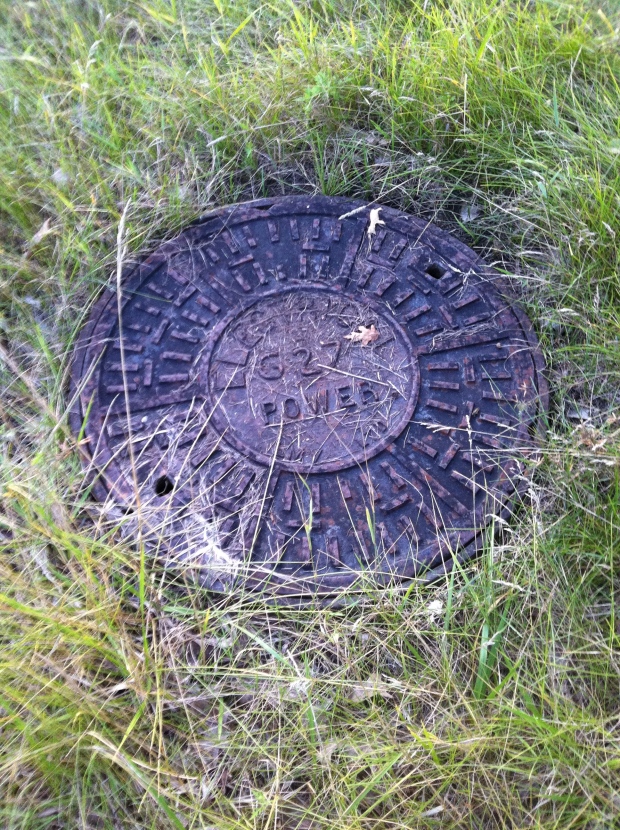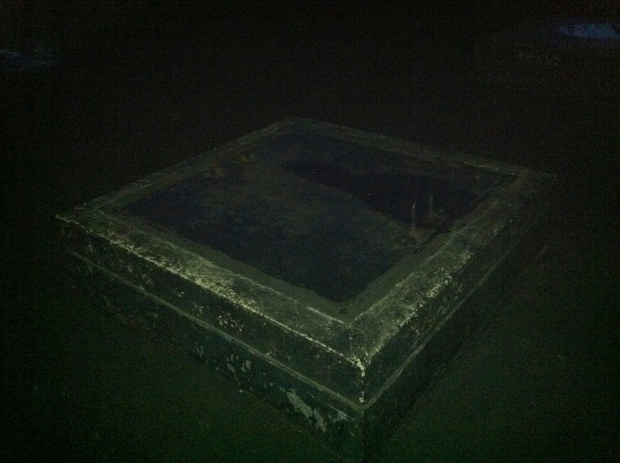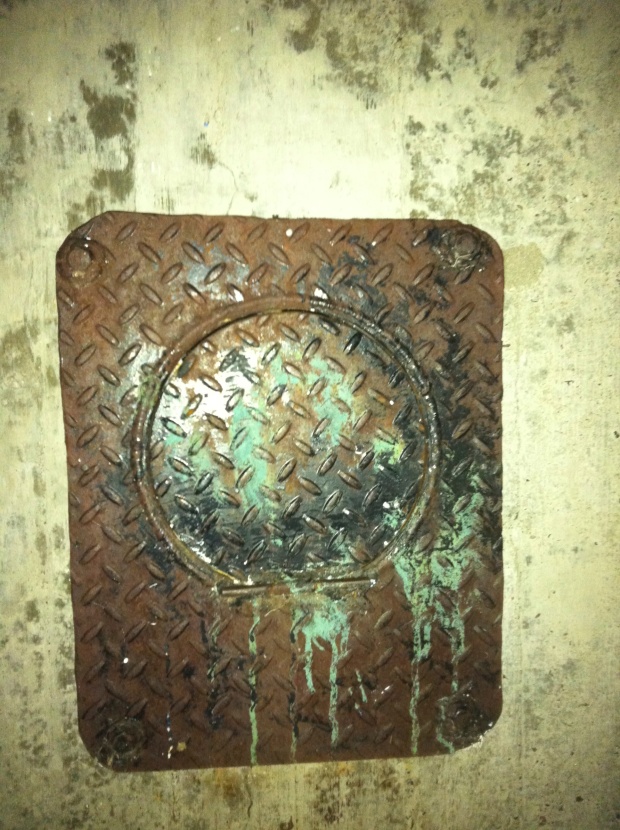A familiar sight to many Ottawa residents enjoying the river-front path along the Ottawa River, the concrete bunker at Remic Rapids has been a mystery to many, myself included. Having lived nearby for over 20 years, I have always been curious as to what purpose this odd concrete structure had situated on the picturesque shoreline of the Ottawa River.
Once and for all I thought I’d get to the bottom of what this architectural oddity was, and find out what purpose it had, or still has. What was revealed was a fascinating hidden history that includes the fact that Ottawa once had a NUCLEAR REACTOR.
The year was 1970 and the Atomic Energy Canada Limited, or AECL, was placing a SLOWPOKE-2 class nuclear reactor at Tunney’s Pasture. According to The Canadian Society For Mechanical Engineers documents, this nuclear reactor was installed in Tunney’s Pasture at 20 Goldenrod Avenue. It was constructed as a commercial testing reactor to determine its feasibility. This nuclear reactor was in full operation after it reached critical mass in 1971 until 1984 when it was then moved to another test site located in Kanata, later decommissioned in 1992.

Sketch from The Canadian Society For Mechanical Engineers document of what the Tunney’s Pasture nuclear reactor looked like.
The reactor, nicknamed SLOWPOKE, (an acronym for Safe LOW-POwer Kritical Experiment) which used 93% enriched uranium. The reactor core sits in a pool of regular light-water, 2.5 m diameter by 18 feet deep, which provided cooling. The reactor built at Tunney’s Pasture achieved “Critical Mass” or the point at which a nuclear reaction is self-sustaining on May 1 1971 and continued operating until 1984.

Atomic Energy of Canada Limited Buildings located on the Tunney’s Pature Complex that housed the SLOWPOKE nuclear reactor 1971-84.
The concrete bunker that remains on the shore of the Ottawa River directly opposite the old nuclear reactor site was built at the same time as the reactor in 1969-70. It was built to facilitate the increased “cooling” needs of Tunney’s Pasture, one of them you could speculate being the addition of a small nuclear reactor.

Aerial image showing the proximity of the Remic Bunker to the Tunney’s Pasture Nuclear Reactor site.
A 1969 November 11 Ottawa Journal article describes in detail the construction of the bunker and a trench used to contain a pipeline to provide this cooling water to Tunney’s Pasture. A 3,000 foot long pipeline was placed in an underground trench that ran from the Ottawa River bunker building to Tunney’s Pasture to provide, as the article states: “river water which will be used for condensing in the air conditioning system.”
The concrete bunker built in 1970, just before the nuclear reactor began operation, housed a pumping station that provided a 35,000 gallons per minute water intake from the Ottawa River through a 42 inch diameter pipe underneath the Parkway over to Tunney’s Pasture. A current satellite image of the area clearly shows the trench line from the bunker to Tunney’s Pasture.
The pipeline would then return used water back to the Ottawa River at a temperature 8 degrees warmer. The pumping station concrete structure and the pipeline was built at a cost of $2.5million and was constructed in co-operation with the NCC who owned the land the project was built on. The NCC at the time re-assured Ottawa motorists the construction of the bunker and pipeline would not disrupt traffic as it crossed the Parkway saying “We Insisted that they install four lane detours,”

A 1965 aerial image showing the Atomic Energy Canada Buildings at Tunney’s Pasture and the area of land where the bunker and cooling water pipeline have yet to be built.
The pumping station bunker and pipeline were finished in 1970 and the reactor began operating a year later. Whether or not the bunker pipeline bringing cooling water to Tunney’s Pasture was directly related to the addition of a nuclear reactor remains speculation but it is interesting to note the proximity and similar timeline of both projects.
The SLOWPOKE reactor was shut down in 1984 and the building it was housed in has since been demolished and is now a parking lot. However, the bunker at Remic Rapids is still there, and you crawl on top of its roof and listen to the hum of machinery working away below almost 45 years later, still bringing cooling waters from the Ottawa River through a 3,000 foot pipeline over to cool the hot air being generated at Tunney’s Pasture.
SOURCES
geomap Ottawa
http://en.wikipedia.org/wiki/SLOWPOKE_reactor
http://www.newspapers.com/newspage/44420893/
Click to access CSME-Slater.pdf
http://media.cns-snc.ca/history/canadian_nuclear_history.html
Google Maps
Bing Maps











Great article … but I’m left wondering where the reactor was moved to in Kanata?
Thanks for reading, it was moved to MDS Nordion in Kanata on MArch Road.
Absolutely fascinating. My husband worked at Tunney’s in the late 70s and was stunned to learn about this now.
Thanks for reading and I hope your husband does not glow in the dark!
interesting article, but I strongly doubt the pump station at Remick Rapids had anything to do with the cooling requirements of the Slowpoke. This was a 20 kW reactor, as is indicated by the “low power” part of the Slowpoke acronym. It sat in 29 cubic meters of water. Basic thermodynamics and knowledge of the thermal properties of water will say that there’s very little chance that a 20 kW power source, regardless of what fuels it, will boil off 29 cubic meters of water.
The Slowpoke cooled by natural convection — no need for a fancy (and expensive) external cooling system. Periodically, the reactor pool was topped up with water from the same regular water system that served the drinking fountains and washrooms of the whole Tunney’s complex.
Thanks for reading and your informative followup. Appreciate the new info.
The Tunney’s Pasture reactor is basically the same as one that was in use for research purposes at Pinawa, Manitoba. Perhaps there was another heat source at Tunney’s Pasture, yet to be revealed, which needed cooling. A most interesting article ottawow, keep up the good work. I had heard Tunney’s Pasture spoken of in hushed terms when I was a child growing up in the sixties in Parkway Park. Never knew about this reactor until I read your article this year.
Great article as usual. I was curious where the reactor went in Kanata – it went to MDS Nordion on March Road, which is allegedly the most radioactive place in Ottawa due to improper dumping of hazardous waste (source http://pondpine.blogspot.ca/2006/04/kanata-is-most-radioactive-place-in.html)
Thanks for the feedback, and I’m not sure what happened to the SLOWPOKE reactor after it was moved to Kanata. I’m sure it can be traced somehow.
“allegedly the most radioactive place in Ottawa… .”
What does that statement mean? How radioactive is the most radioactive place in Ottawa? Is background dose higher than 1.8 millisieverts per year (the level measured in Ottawa; see http://www.nuclearsafety.gc.ca/eng/resources/radiation/introduction-to-radiation/radiation-doses.cfm)? How many curies or becquerels can you measure in a given sample of soil?
The article linked to gives no information that might help answer these questions. The words “sievert,” “rem,” “gray,” becquerel,” “curie,” “rad,” and “roentgen” — all of which are units of either activity or dose — were not mentioned.
That’s because they are so low as to be laughable. Calling Kanata the most radioactive place in Ottawa is like me saying I’m the strongest man in the south part of Ottawa Centretown.
For perspective, some homes in Ramsar, Iran have background radiation levels of 260 mSv per year. Remember Ottawa’s 1.8 mSv? Ramsar at 260 has levels that are 144 times — yes, 144 times — the background level measured in Ottawa.
Ramsar is a spa town on the Caspian Sea. Tourists flock there to enjoy the benefits of the natural hot springs. The hot springs are hot because there is a lot of uranium and thorium in the ground under them, and uranium and thorium are radioactive and give off heat when they decay. They are what make the hot springs hot, and they are the source of the relatively high radioactivity. Nobody has ever found any adverse effect among the residents of Ramsar.
People go to Ramsar to enjoy the hot springs and to get healthy, same as they do in Radium, BC. Why is it called Radium? Three guesses. That water is radioactive too. I languished for a couple days in the hot pool there in 1977 and I’m still alive today.
Most interesting Steve, I wonder if you can tell me what the relationship is between “nano-curies” as indicated on a Small Article Monitor, and “counts per minute” or mRem on a pancake meter ?(which most people would know as a “Geiger -Counter”) I have only done a little reading on the subject.
Very interesting article. I’ve always wondered what the structure was, but wasn’t curious enough to investigate. Thanks for doing it for me. I wonder how much water is taken from the river and returned.
I worked at the Pature from 1968 to 1979 and knew the complex was heated by hot water. Most of the old buildings were not air conditioned.
I was in the Banting Buiding from when it was built (I think 1977), right beside the nuclear reactor and didn’t even realize it.
Thanks for your comments and I’m glad I could shed some light on the structure for you…amazing what happens near us without us knowing.
Awesome, I used to bike by this structure as a kid and wonder what the heck it was, now I know… I kind of expected some guy with an Australian accent to be in there, typing numbers into an apple 2 computer, but hey, not all hatches reveal mysterious contents.
Cool, Thanks for reading!
Extremely interesting, great work!
What would be the purpose of it still functioning today and to be updated with modern security???…things that make you go hmmm!
It is apparently being used to pump water in for cooling the buildings in summer time….
they use cool river water as “condenser” water for large chillers, which are air conditioners. I work in large scale HVAC work, not at this building specifically but i know it is one of the largest plants in the city. Basically the chilled water system will gain heat from the plant, return to the chiller, where this warm water will boil off cold liquid refrigerant, from there the vapour refrigerant is compressed and enters the condenser as a high temperature vapour, this is where the cold river water cools the refrigerant back down (condenses back to liquid refrigerant), effectively removing the heat from the building, and returning the warmer condenser water to the river. As for steve said over a year ago, I’m sure this system did have something to do with the nuclear power plant, it doesn’t matter how big the reactor is, they are still giant cooling loads. no, the water would not boil off but it will need to be cooled, I’m sure there where pumps within the reactor that returned to the chiller to complete the same process i mentioned above. I do do some work in MDS nordion and i can tell you they have a giant cooling loads all year around just for there reactors.
Can this pumping station not be transformed into eco-friendly air conditioning, similar to the systems used in Toronto from Lake Ontario?
Mike G I worked in the central heating plant for 6 months and that bunker is for water pumps. The water is pumped into the central heating plant from this bunker. The steam then is pumped all over Tunney’s to heat the entire complex and cool in the summer. Yes there is a system of tunnels, but they carry steam / cooling pipes and high voltage cables to all of the different buildings in the complex.
NO it is not a NUCLEAR REACTOR
Hi Mike, Thanks for reading and your input….it was mentioned that the bunker itself was the nuclear reactor, that was located on property inland at Tunney’s Pasture. The bunker is simply a water intake structure for the Tunney’s complex, of which there used to be a nuclear reactor residing.
They do not use theese pumps for heating, steam is made from natural gas or oil burners, with make up domestic water. A geothermal river loop is strictly to meet cooling demands. And im sure at one point the cooling was used for nuclear part of the plant as well as everything else that required cooling in the plant.
Nice article! I was walking along the river today to check out the spring flooding. There was a work crew at the bunker filling and placing sandbags on the river side of the bunker. The water is lapping at the edge and there is a portable pump running to remove river water which is presumably entering the pumping station. I wondered what was in the bunker and thanks to this article now I know.
Thanks for reading and sharing an interest in this site! Cheers!
So…
there have been many changes at Tunney’s Pasture over the years…
which buildings, specifically is this water involved in the cooling of?